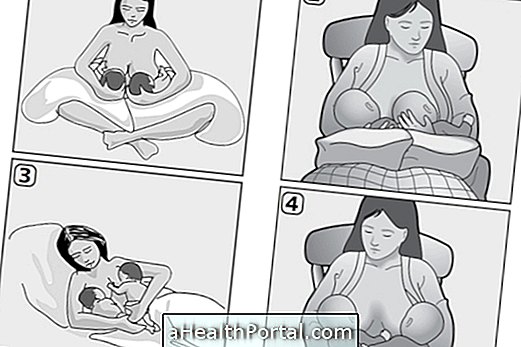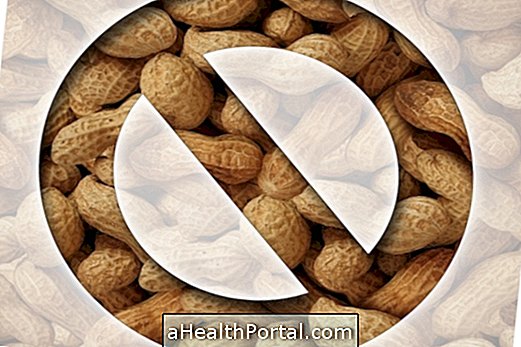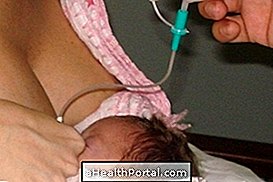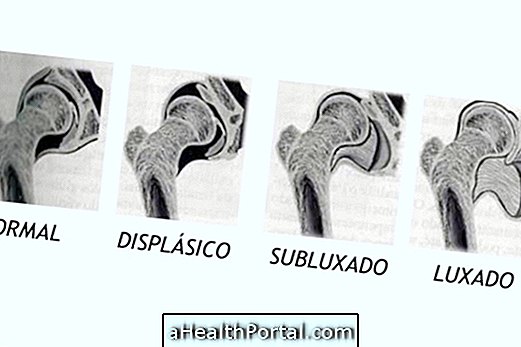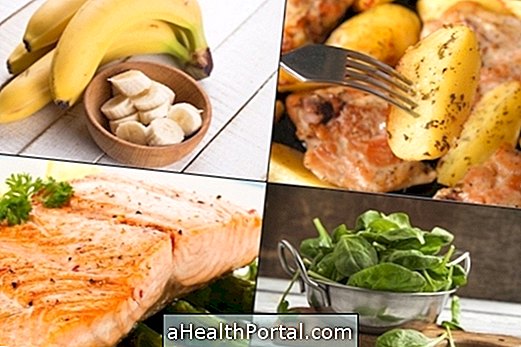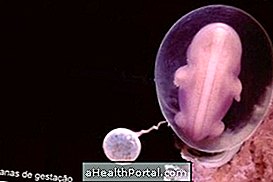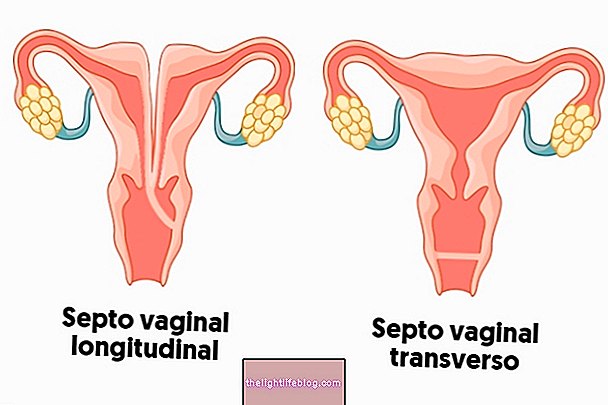Feeding the baby begins with breast milk or bottle until 4-6 months and then solid foods such as vegetables, fruits, porridge, white meats, eggs and fish are introduced in a specific order according to the development of the baby so that the baby can properly digest these foods and has no allergies.
The baby needs 6 meals a day: breakfast, mid-morning snack, lunch, afternoon snack, dinner and supper. In addition, some babies still feel the need to nurse at night, making one more meal. When the baby arrives full 1 year, only breakfast and supper must contain milk and all other meals should be performed with solid foods, eaten with spoon.

Order of food introduction
The following are indications of a standard food regimen for infants 0-12 months of age:
| Age in months | What you can eat | Comments |
| 0-6 | Breastmilk or bottle, 7 times a day, or when the baby wants | Baby breastfeeding does not need water, but whoever takes bottle needs |
| 4-6 | Vegetable puree, mashed biscuit or porridge | Porridge can only have gluten after 6 months |
| 6-7 | Start eating cooked and shredded chicken or turkey meat | Do not give red meat, rice and beans together |
| 8-9 | Start offering crushed egg yolk in food | Do not give the whole egg, yet |
| 9-12 | Start offering fish and the whole egg. From here you can eat rice with beans, and red meat. | Following a healthy diet with few fats and sugars |
This is just a general outline of infant feeding, and your pediatrician can tailor it to your child's needs.
How to prepare meals
It is recommended to prepare the baby's meals separately from the family. The ideal is to braise the onion with a little extra virgin olive oil and then add water and vegetables (2 or 3 different for each soup or puree). Then you should knead everything with a fork and leave in a not too liquid consistency to prevent the baby from choking. This can be an example of lunch and dinner.
For snacks you can offer natural yogurt, without sugar, and supplement with a kneaded fruit, such as banana or apple scraped. The potato or porridge should be prepared according to the instructions on the packaging, because some must be prepared with water, and others with milk, which can be breast milk or adapted milk, according to the age of the baby.
How to Start Feeding Introduction
Usually the pediatrician indicates the replacement of a feeding or bottle for a meal, every 3 weeks. So the baby's first solid meal can be lunch for 3 weeks. After that, the pediatrician can indicate the introduction of afternoon snack, and so on.
In addition, the baby still needs breast milk up to 2 years of age, so he can suckle before breakfast and before going to bed, with an interval of at least 1 year between the previous meal. However, the baby can also nurse at other times of the day, but to not hinder their development the blow-ups should happen after the lunchtime dessert, snacks or after dinner dessert.
How much should the baby eat
The baby does not have a very large stomach and it is true that solid foods take up more space than the same liquid version. Therefore, parents do not need to despair if the baby seems to eat little at a time. The important thing is not to give up too fast, and also not to force the baby to eat if it shows resistance. The variation of flavors is very important so that the baby learns to eat everything.
What to do when your baby does not want to eat
Sometimes the baby does not want to eat, bringing distress and worry to parents and caregivers, but there are some strategies that can help maintain a healthy and diversified diet from childhood. Watch the tips in the following video:

What the baby should not eat
The baby should not eat sweets, sugary foods, fried foods, soda and very seasoned sauces before 1 year of age, as they may be detrimental to his or her development. So, some examples of foods that the child should not eat are chocolate milk, chocolate, chocolate, custard, cake topped with filling or filling, soda and industrialized or powdered juice. See more examples of foods your baby can not eat until age 3.


